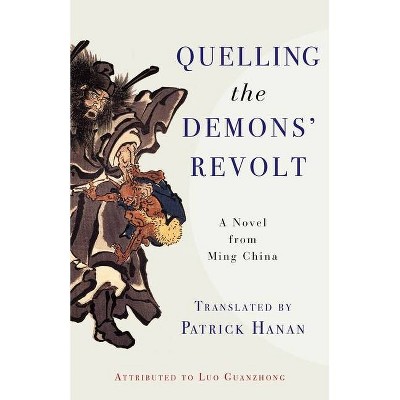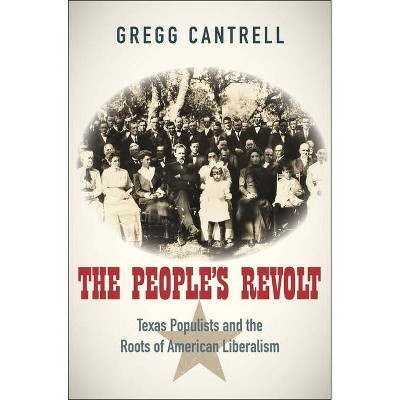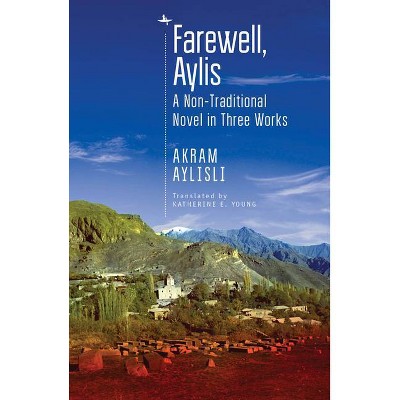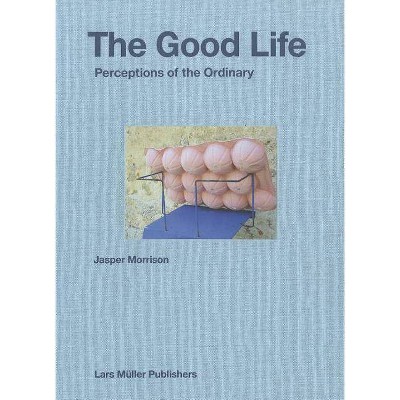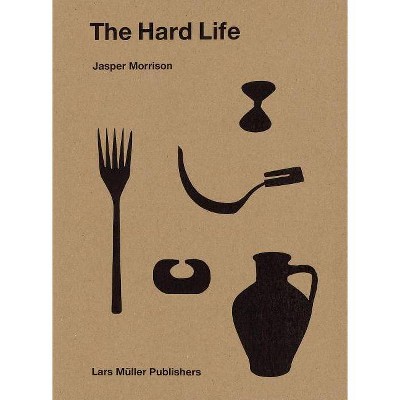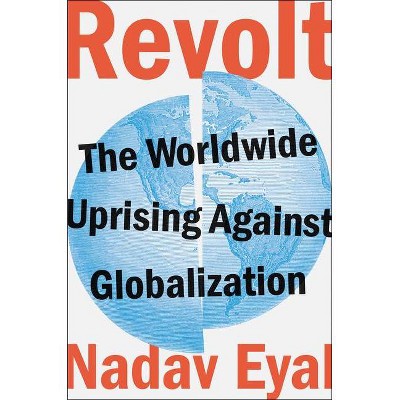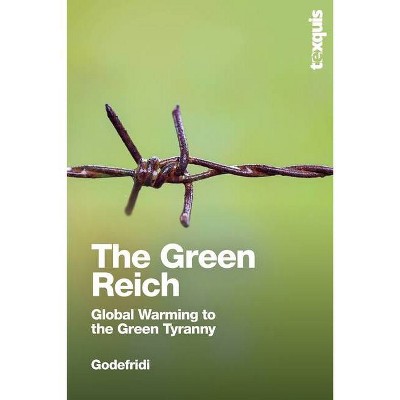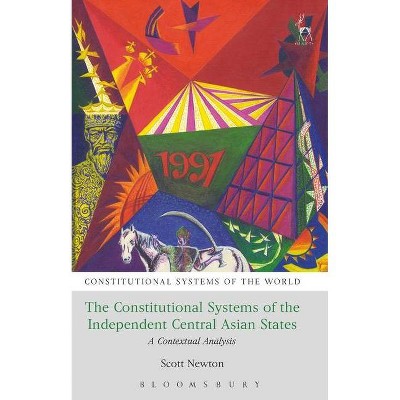The Central Asian Revolt of 1916 - by Alexander Morrison & Cloé Drieu & Aminat Chokobaeva (Hardcover)
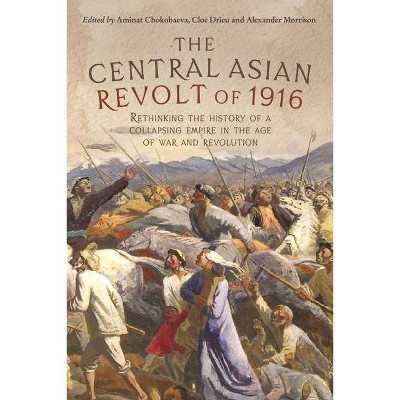
Similar Products
Product info
<p/><br></br><p><b> About the Book </b></p></br></br>This volume provides a comprehensive reinterpretation of the 1916 Central Asian Revolt - a key event in the history of Central Asia, the Russian Empire and the First World War.<p/><br></br><p><b> Book Synopsis </b></p></br></br><p>In the summer of 1916, the Central Asian territories of the Russian Empire erupted in revolt against Tsarist rule. Three thousand Russian settlers were killed as an unexpected crisis gripped an Empire staggering under the pressures of total war. Central Asia was the most remote, alien and least well-integrated of Imperial Russia's territories, and the skeletal colonial administration was ill-prepared. Tens of thousands of troops were hurriedly sent to the provinces of Turkestan and the Steppe, and at least 150,000 Central Asians perished in the subsequent military repression and reprisals by the settler population, while tens of thousands more fled to China. In the Soviet period the revolt became key evidence for an indigenous revolutionary consciousness among the Central Asian peoples, but interpretations of its significance were always ideologically contested.<br /> <br /> This is the first English-language volume on the Central Asian Revolt of 1916 to appear for over sixty years. It contains contributions from leading historians of Central Asia from ten different countries, including many from the region itself. Between them they provide a comprehensive reinterpretation of the revolt, its suppression and legacy, from its original outbreak in sedentary regions of what is now Uzbekistan and Tajikistan, through the core area of violence in today's Kyrgyzstan, to the long-lasting rebellion on the northern Kazakh steppe. It sets the revolt within the wider context of the First World War, and of the continuum of crisis which engulfed the Russian Empire after 1914. It will be of vital interest to students and scholars of the history of the First World War, the Russian Revolution, Central Asia and European Colonialism.</p><p/><br></br><p><b> From the Back Cover </b></p></br></br>In the summer of 1916, the Central Asian territories of the Russian Empire erupted in revolt against Tsarist rule. Three thousand Russian settlers were killed as an unexpected crisis gripped an Empire staggering under the pressures of total war. Central Asia was the most remote, alien and least well-integrated of Imperial Russia's territories, and the skeletal colonial administration was ill-prepared. Tens of thousands of troops were hurriedly sent to the provinces of Turkestan and the Steppe, and at least 150,000 Central Asians perished in the subsequent military repression and reprisals by the settler population, while tens of thousands more fled to China. In the Soviet period the revolt became key evidence for an indigenous revolutionary consciousness among the Central Asian peoples, but interpretations of its significance were always ideologically contested. This is the first English-language volume on the Central Asian Revolt of 1916 to appear for over sixty years. It contains contributions from leading historians of Central Asia from ten different countries, including many from the region itself. Between them they provide a comprehensive reinterpretation of the revolt, its suppression and legacy, from its original outbreak in sedentary regions of what is now Uzbekistan and Tajikistan, through the core area of violence in today's Kyrgyzstan, to the long-lasting rebellion on the northern Kazakh steppe. It sets the revolt within the wider context of the First World War, and of the continuum of crisis which engulfed the Russian Empire after 1914. It will be of vital interest to students and scholars of the history of the First World War, the Russian Revolution, Central Asia and European Colonialism.<p/><br></br><p><b> Review Quotes </b></p></br></br><br>'The 1916 rebellion in Central Asia is tremendously important for historians of both the Great War and the 'Russian' Revolution. This collection of uncommonly rich and deep essays takes the analysis of 1916 to a much higher level by showing the dynamics of power and violence at the microlevel as well as at the level of the empire as a whole. The authors use a wide variety of sources sensitively and effectively. This volume is essential reading for anyone interested in the period.' Joshua Sanborn, David M. '70 and Linda Roth Professor of History, Lafayette College 'Finally a book that examines in depth the revolts that, in 1916, upset the fragile Imperial order in Russian Central Asia and triggered the bloody reaction of the army and the Russian settlers against the local populations. By reconstructing the micro-dynamics of the uprising, its relationship with the ongoing Great War and the role of the various actors involved in the events this wonderfully researched volume represents an indispensable tool to understand the nature of the long Russian domination over the region.' Marco Buttino, Emeritus Professor, University of Turin 'This impressive volume provides a state-of-the-art overview of the events of 1916 in Central Asia. The treatment here is both deep and multifaceted, combining broad analytic horizons with thorough and careful treatment of individual events. Bringing together scholars from North America, Europe, and Central Asia, and based on research in a wide range of languages and multiple archives and sources, it presents both indigenous voices as well as those of Russian settlers, soldiers and officials. The chapters in this volume will allow the 1916 Central Asian Revolt to take its rightful place in the historiography of the First World War, the Russian Empire, and of anti-colonial rebellions. As one author notes, this event sees the catalytic intersection of the world war with Russia's colonial crisis. This excellent volume should be of great interest to historians of the Russian empire and Soviet Union, but equally to scholars interested in colonialism and anti-colonial resistance and the First World War.' Peter Holquist, Associate Professor of History, University of Pennsylvania, and author of <i>Making War, Forging Revolution. Russia's Continuum of Crisis 1914 -1921</i> '[...] It brings together cutting-edge research by scholars from Central Asia, Europe, Japan, and North America to present a detailed and analytically sophisticated view of the uprising. [...] This volume is the definitive account of the 1916 revolt in any language.' <i>The Russian Review </i><br><p/><br></br><p><b> About the Author </b></p></br></br>Aminat Chokobaeva is a Postdoctoral Fellow at Nazarbayev University Cloé Drieu is a Research Fellow at CNRS in the Centre d'études turques, ottomanes, balkaniques et centrasiatiques (CETOBaC) Alexander Morrison is a Fellow and Tutor in History at New College, Oxford
Price History
Cheapest price in the interval: 130 on November 8, 2021
Most expensive price in the interval: 130 on December 22, 2021
Price Archive shows prices from various stores, lets you see history and find the cheapest. There is no actual sale on the website. For all support, inquiry and suggestion messagescommunication@pricearchive.us
